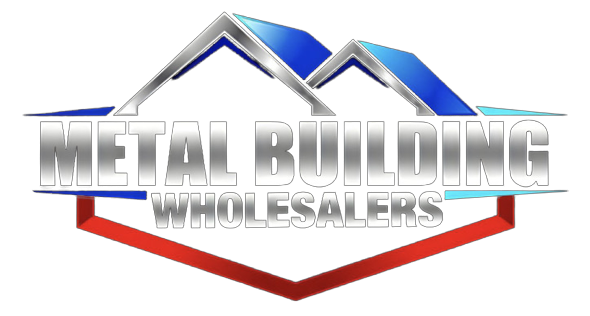When churches are looking to build or upgrade their facilities, choosing the right materials is essential for meeting both practical and aesthetic needs. Metal buildings are becoming a popular choice for churches due to their many advantages. From cost savings to flexibility and durability, metal structures offer a range of benefits that make them an excellent option for religious institutions. This article explores why metal buildings are a great choice for churches and how they can improve the functionality and longevity of a place of worship.
-
Cost-Effectiveness
One of the main reasons churches choose metal buildings is their affordability. Metal structures often cost less to build compared to traditional brick, stone, or wood buildings. For churches with tight budgets, the lower initial cost of metal buildings can be very appealing. This allows funds to be used for other important activities and programs.
Cost-Effectiveness Factors:
- Lower Material Costs: Steel and aluminum are usually cheaper than traditional building materials like brick or stone.
- Reduced Labor Costs: Metal building components are pre-made, which speeds up construction and lowers labor costs.
- Minimal Maintenance: Metal buildings require less upkeep compared to wood or masonry structures, which saves money over time.
-
Durability and Longevity
Durability is crucial for any church building. Metal buildings are known for their strength and long-lasting nature. Made from high-quality steel or aluminum, these structures can withstand harsh weather and other challenges. This makes them a great choice for buildings that need to last for many years.
Durability Benefits:
- Weather Resistance: Metal buildings can handle heavy rain, snow, and strong winds without significant damage.
- Pest Proof: Metal structures are not affected by pests like termites or rodents.
- Fire Resistance: Metal is non-combustible, which provides excellent fire protection and can lower insurance costs.
-
Design Flexibility and Customization
Metal buildings offer great design flexibility, allowing churches to create spaces that fit their specific needs. Whether a church needs a traditional sanctuary, a multipurpose hall, or extra classrooms and offices, metal buildings can be customized to meet these requirements.
Design Flexibility Features:
- Open Floor Plans: Metal buildings can be built with large, open spaces without support columns, making them ideal for flexible layouts and accommodating large groups.
- Customizable Features: Churches can add elements like steeples, decorative facades, and stained glass windows to achieve a traditional look while benefiting from metal’s advantages.
- Expansion Capabilities: Metal buildings can be easily expanded or modified if the church needs more space in the future.
-
Energy Efficiency
Energy efficiency is another important benefit of metal buildings. Modern metal churches are designed with features that help save on heating and cooling costs. Good insulation and reflective roofing can make the building more comfortable and cost-effective.
Energy Efficiency Benefits:
- Insulation Options: Metal buildings can include high-quality insulation to keep indoor temperatures stable and reduce energy use.
- Reflective Roofing: Metal roofs with reflective coatings can lower cooling costs by reducing heat absorption.
- Natural Lighting: Large windows and skylights can provide more natural light, reducing the need for artificial lighting.
-
Sustainability and Environmental Impact
Many churches focus on being environmentally friendly, and metal buildings support this goal. Metal structures are often made from recycled materials and are highly recyclable themselves, making them a sustainable choice.
Sustainability Features:
- Recyclable Materials: Steel and aluminum are recyclable, which reduces the environmental impact of building materials.
- Energy Efficiency: Metal buildings are designed to be energy-efficient, lowering energy use and supporting environmental goals.
- Longevity: The long life of metal buildings means fewer resources are needed for repairs and replacements, helping with sustainability.
-
Quick Construction Time
Speed of construction is a significant advantage of metal buildings. Pre-engineered metal building kits come with pre-cut and pre-drilled parts, making assembly faster and simpler. This is beneficial for churches looking to minimize construction time and start using their new space quickly.
Construction Efficiency Benefits:
- Pre-Fabricated Components: Metal building kits include pre-made parts, which speeds up construction.
- Simplified Assembly: The design of metal buildings allows for quick assembly with minimal specialized skills and tools.
- Reduced Disruption: Faster construction means less disruption to the church’s activities and a quicker move-in.
-
Low Maintenance Requirements
Maintaining a church building can be costly, but metal buildings are designed to be low-maintenance. Unlike wood structures that need regular painting and treatment, metal buildings are easier to care for.
Maintenance Advantages:
- Rust-Resistant Coatings: Modern metal buildings come with coatings that prevent rust, extending the life of the structure and reducing maintenance needs.
- Ease of Cleaning: Metal surfaces are easy to clean and require less effort compared to other materials.
- Durable Finishes: Metal buildings often have durable finishes that withstand wear and tear, reducing the need for frequent repairs.
-
Safety and Structural Integrity
Safety is crucial for any building, and metal buildings provide strong structural integrity. The strength of steel or aluminum ensures that metal churches can handle various stressors and maintain stability over time.
Safety Features:
- Earthquake Resistance: Metal buildings are designed to resist earthquakes, providing safety in areas prone to seismic activity.
- Strong Load-Bearing Capacity: Metal structures can support heavy loads and resist impacts, enhancing overall building safety.
- Compliance with Codes: Metal buildings are engineered to meet building codes and safety standards, ensuring a secure environment for worship and community activities.
Conclusion
Metal buildings offer many advantages that make them a great choice for churches. They are cost-effective, durable, and flexible, providing a practical and long-lasting solution for religious institutions. With their quick construction time, low maintenance requirements, and strong safety features, metal buildings meet the needs of modern churches while supporting their mission and values. As churches look to build or upgrade their facilities, metal buildings provide a reliable and efficient option that enhances both functionality and aesthetics.

